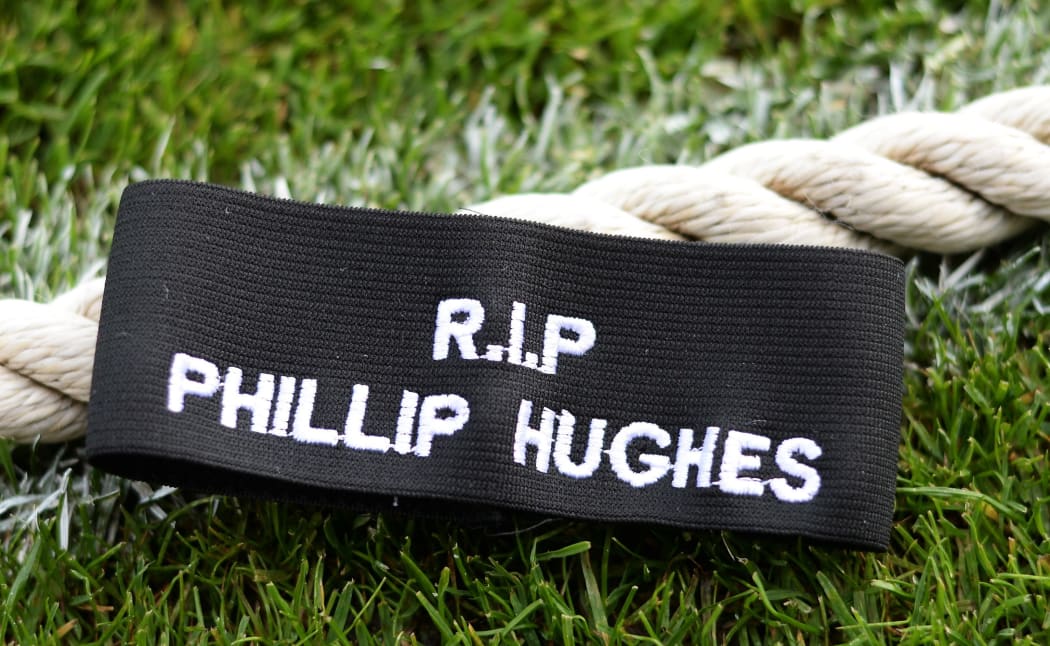Lack of medical attention for Phillip Hughes has been ruled out as a factor in the cricketer's death by an independent report which calls for mandatory use of helmets by batsmen and close-in fielders.

Phillip Hughes tribute black armband. Photo: PHOTOSPORT
Cricket Australia's review into the death of the former Test batsman recommends helmets be compulsory for batsmen facing pace bowling in nets and games.
But it stops short of making it mandatory for helmets to have clip-on guards at the rear of the helmet.
Such guards were introduced after Hughes died on November 27TH, 2014, two days after being hit in the neck while batting for South Australia against NSW in a Sheffield Shield game.
The report, by President of the Australian Bar Association David Curtain QC and released today, reviewed the medical treatment given to Hughes.
"I do not believe any lack of medical attention contributed to Phillip's death," Curtain said in his report.
Hughes, who played 26 Tests and 25 one-day internationals for Australia, received medical help 42 seconds after being struck by the delivery from NSW paceman Sean Abbott.
An emergency MediCab was at the scene within three minutes of him being struck by the ball at the rear of his neck.
Hughes received attention from CA's chief medical officer Dr John Orchard and intensive care specialist Dr Tim Stanley, who was at the SCG as a spectator, before an ambulance arrived at the ground 20 minutes after the incident.
The Curtain review recommended all first-class cricketers wear helmets made to British safety standards while batting against medium or fast bowling, in nets and games.
Close-in fielders, except those in slips, should also be compelled to wear helmets and wicketkeepers don protective eyewear and head protection while standing up to the stumps.
Curtain found while Hughes was wearing a helmet that met Australian standards at the time, which has since been withdrawn, the protective device didn't meet the more recent British standard which extends the face-grille further to the rear of the helmet.
But he said even if Hughes was wearing the English standard helmet, it wouldn't have saved him given the nature of the blow he sustained.
25 year old Hughes died from a basal subarachnoid haemorrhage caused by the blow.
-aap

